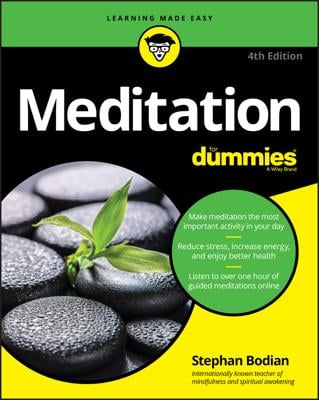Loving-kindness meditation
This is a powerful exercise to practice with your children. If your children really like the exercise, they may be happy to do the meditation everyday before going to sleep. They may find they sleep more deeply and feel calmer and refreshed the next day. Pause after giving each instruction to give your child plenty of time to experience the meditation.-
Ask your child to find a comfortable, relaxed sitting or lying down posture with his eyes closed, if that feels okay for him.
-
Ask him to remember something that makes him feel happy.
He may recall a game he played with a friend, a favorite hobby or much loved cuddly toy. Adjust according to the age of your child.
-
Ask him to place both his hands over his chest and imagine the feeling of warmth, peace and happiness grow from there to all over his body and even the room around.
-
Tell him to imagine this happiness and loving-kindness spreading to everyone in his family, then to all of his friends, all of the children in his class, his school and his town, even those he doesn’t get on with very well.
Then to all people on the planet, living in all the different countries. Then to all animals and plants on earth including those that live high up in the air and down in the deepest oceans.
Bubble meditation
This meditation is ideal for children from age ten upwards. You can also try the meditation for younger children too – just simplify the language a little.-
Ask your child to sit or lie down in a comfortable position.
Allow him to use pillows and blankets to make himself cozy. You don’t need to ask him to sit up straight for this meditation. He can close his eyes if he is okay with that.
-
Say to him, ‘Imagine you have a small, shiny bubble in your hand, that can’t be burst. Imagine dropping that bubble on the floor in front of you, and watching it gently expand until it’s so big you can step inside it.
In fact, the bubble is the size of a large, spacious room. Then, step inside the bubble. Now, imagine you can instantly decorate the inside of this bubble in any way you like. You can paint the walls and ceiling just as you like. You can have games machines, expensive televisions, and your favorite music playing– whatever you want. Your favorite food is available whenever you need it.
Consider all the sights, sounds, smells, tastes being just how you like them to be inside your bubble. You feel really relaxed, comfortable and safe inside this bubble of yours.’ Allow him time to really enjoy his own personal bubble that he’s created for himself. Children often like imagining what to put inside their bubble and so you can extend this for more than five minutes.
-
Say to your child, ‘Now you’ve created and enjoyed your own personal bubble, you’re ready to keep this personal bubble of yours for later on.’
Now say to your child, ‘you step out of your bubble and see the bubble shrinking so you can hold the bubble in your hand once again. Now imagine the bubble becomes so small it can move inside your hand. Allow the bubble to go into the center of your chest, where your heart is. Any time you feel you need to go back into your bubble, you can.’
-
Bring the meditation to a close by asking him to gently open his eyes and then discuss how the practice went.
Drawing meditation
This meditation trains your child to be mindful of shape, color, light and shade. This is particularly helpful for children who are resistant to traditional meditation with eyes closed, as drawing doesn’t feel like meditation at all.-
Ask your child to draw an object in the room.
He can look at the object as he draws.
-
When he’s finished, you can both compare the picture with the actual object.
Which bits are close to the reality and which bits aren’t quite right? Emphasize this isn’t a competition, more of an experiment to see what happens.
-
If the child wants, you can repeat the exercise and see how much better the second drawing is through paying attention.
Body meditation
Children are far more likely to give their attention to the world around them rather than their own bodies. This meditation helps to bring their attention back to their physical body, training their attention to focus on one part at a time.-
Ask your child to lie down in a quiet and relaxing place.
He can close his eyes if he wants.
-
Ask him to name each part of his body, beginning with his toes and moving up to his head.
After naming each part, ask him to tell you how that part of the body feels. After naming that part of the body, he can move it – this changes the feeling and brings a bit of fun to the exercise too.
-
When you get to the top of his head, gently ring a bell and ask him to put his hand up when he can no longer hear the bell at all.
By asking him to identify when the sound turns into silence, he is drawn naturally into the peaceful silence, and can feel more calm and refreshed.

